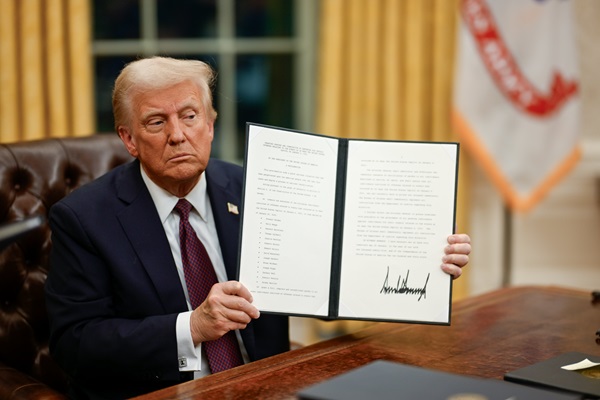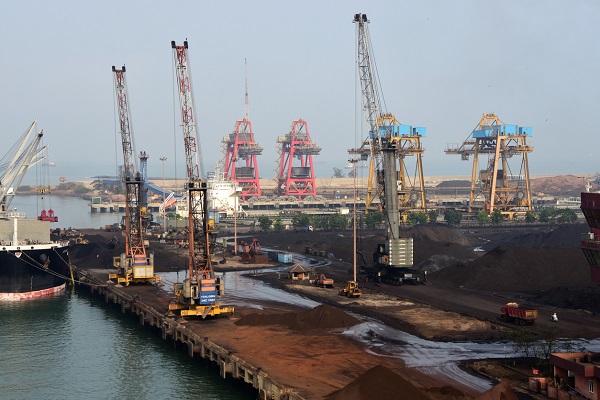.png)

Nilanjan Banik is a Professor at the School of Management, Mahindra University, specialising in trade, market structure, and development economics.
May 13, 2025 at 10:05 AM IST
Renowned Nobel laureate economist Robert Solow was once asked whether having a trade deficit is bad for an economy. He answered that he would always have a trade deficit with his barber and always run a trade surplus with his students. Such is the nature of economic transactions.
Some countries are more efficient at producing certain goods and services, which they export, while benefitting from importing those they produce less efficiently. The argument that the US should impose equal reciprocal tariffs is fundamentally flawed. It contradicts the principle of comparative advantage, the very foundation of international trade since the beginning of modern civilisation.
If the US were to implement reciprocity in tariffs, it would risk a short-term recession and potentially follow a trajectory similar to that of Argentina–a country considered an economic miracle in the early 20th century, but later declined as a result of protectionist policies. Beginning in the 1930s, Argentina imposed restrictions on labour immigration and sharply increased tariffs, resulting in long-term economic consequences that have continued to persist today.
If history and economic policy trends are any indication, US President Donald Trump had little choice but to back down. It was no surprise that on May 12, 2025, the US and China agreed to a significant 90-day suspension of tariffs, with both nations committing to reducing duties on each other’s goods. The US tariffs on Chinese imports will decrease from 145% to 30%, while China's tariffs on American products will drop from 125% to 10%.
China, for its part, has also agreed to remove all trade restrictions, including those on rare earth materials, crucial for the US electronics, defence, and green energy sectors. If China, as per US demands, successfully addresses the fentanyl crisis by strengthening domestic regulations on synthetic opioids, the existing 30% tariff will be further reduced to 10% at the end of the 90-day period. Fentanyl, a powerful and often lethal drug, has contributed to tens of thousands of overdose deaths annually in the US, creating a public health crisis.
As a businessman, Trump has long adhered to the strategy of testing the waters, negotiating aggressively, and settling somewhere in between. But in this case, China appears to have the upper hand.
China has remained defiant, as it had little to lose. A post by a Chinese social media influencer stating, “Our ancestors didn’t cave in - why should we give up what we have?” is gaining millions of views. Last March, a Chinese spokesperson declared, “If war is what the US wants, be it a tariff war, a trade war, or any other kind, we are ready to fight until the end.”
US tariffs have never been effective in containing the Chinese imports. The average annual trade deficit between the US and China increased from $311 billion during Barack Obama’s presidency (2009–2016) to $361 billion during Trump’s first term (2017–2020), despite his aggressive stance toward China.
There are ways to evade tariffs. Since tariffs target a country's exports to the US, the simplest workaround is to relocate production and export from a third country–something the Chinese have mastered. The loss in exports from China to the US is increasingly being offset by exports from countries in Southeast Asia, with US imports from the region rising by 14 percentage points between 2018 and 2023.
Vietnam, Malaysia, and Thailand have emerged as primary beneficiaries. Vietnam's exports to the US surged by 40% between 2018 and 2023, reflecting the broader trend of Chinese manufacturers shifting final assembly to third-party countries to bypass tariffs.
Similarly, to benefit from the US-Mexico-Canada trade alliance, many Chinese firms are relocating their production base to countries closer to the US, such as Mexico. In April 2024, the US Trade Representative Katherine Tai accused China of disguising its steel products as Mexican steel to enter the US market. In 2023, US imports of Mexican goods totalled $475 billion, approximately $20 billion more than in 2022. During the same period, imports from China fell to $427 billion, down by about $10 billion.
An estimated $3.7 billion of Chinese FDI came to Mexico in 2023, significantly higher than the average flow of $1.3 billion during the previous decade. At least 30 Chinese firms now operate out of Mexico, including Chinese automobile giants such as BYD and Chery International. Chinese FDI to Mexico has increased by 30% over the past two years.
In contrast, trade interdependence between the US and China has decreased during the past decade. Between 2018 and 2024, China's share of trade with the US has fallen from 15.7% to 10.9%. Since China has already diversified its export routes by channelling products to the US through third countries, US non-tariff measures have also become less effective in curbing Chinese trade dominance.
According to the Global Trade Alert database, the US has initiated more than 4,525 protectionist measures against Chinese exports. Yet, the US trade deficit with China continued to rise.
China has enhanced the competitiveness of its manufacturing exports by continuing to shift production to locations with lower input costs. Much of the Chinese investment in the Greater Mekong Subregion is driven by lower land and labour costs in countries such as Cambodia, Lao PDR, and Vietnam. China has invested around $1 trillion in countries in Africa, Latin America and Asia. This has helped reduce China's energy requirements, allowing Beijing to secure cheaper foreign energy sources such as oil and power and minerals.
Chinese companies have built six hydropower plants and one thermal power station in Myanmar and invested in power transmission and copper processing units in Vietnam. In countries like Sri Lanka (Hambantota port), Pakistan (Gwadar port), and throughout the Middle East, Africa, and Southeast Asia, Chinese investments are being used to develop port infrastructure, to reduce the cost of shipping Chinese products.
The concept of reciprocal tariffs is fundamentally flawed, as it assumes tariffs on China will affect US imports from third countries. Economics 101 teaches that the real world does not operate under the ceteris paribus--assumption. The sooner Trump understands this the better it will be for the US economy.




